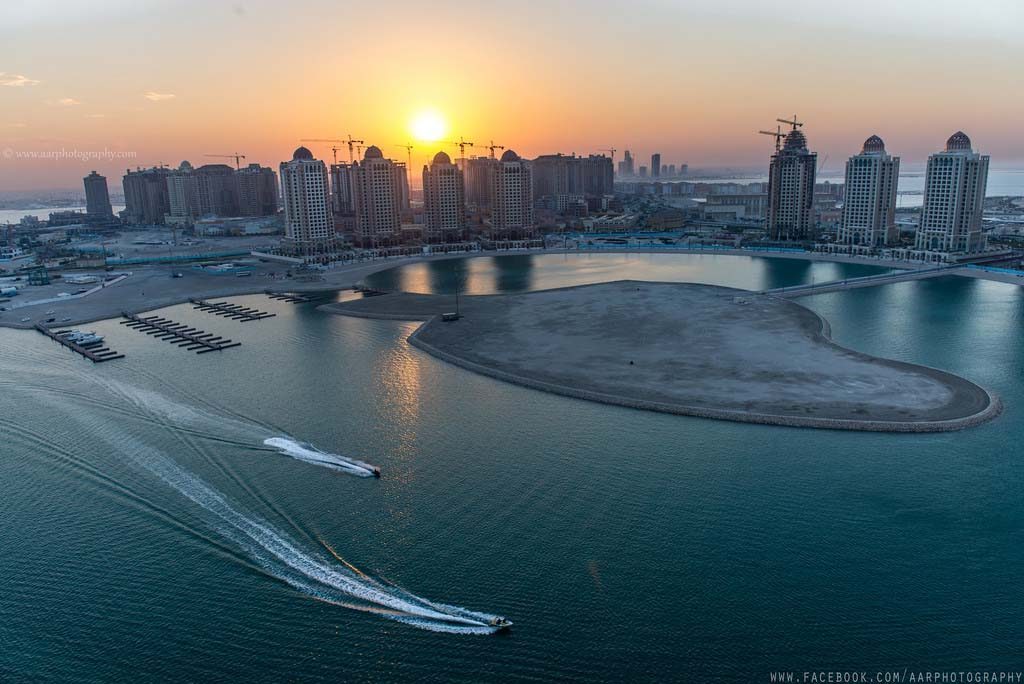
Despite adding new residents daily, roughly three out of every four completed housing units at the Pearl-Qatar are currently vacant, according to the project’s lead developer.
Most of the occupied units are concentrated in and around the more completed zones of the man-made island that have shops and restaurants, such as Porto Arabia, said Roger Dagher, a spokesperson for United Development Co., on the sidelines of the annual Cityscape Qatar real estate exhibition.
He rejected the characterization that occupancy rates are currently low, saying many people are simply waiting for construction to wrap up in certain areas and amenities to be developed.
“As we complete each district, it will be full,” he said. “The more construction is complete, the more people move in.”
The Pearl-Qatar is being built in stages and is set to contain a total of 18,831 villas, apartments, chalets and townhouses when construction is completed in 2018.
So far, between 11,300 and 12,250 units have been completed, according to Dagher. Of those, he said between 3,500 and 4,000 are occupied.
If current trends continue, the empty units should be absorbed in the coming years, as property owners are presently taking possession of some 1,000 units each quarter, Dagher said.
Officials have previously said that slow Civil Defense approvals had prevented some restaurants and residential towers from opening.
Strategy questions
While UDC is developing parts of the Pearl-Qatar itself, including the fully occupied towers four and five in Porto Arabia, its business model involves selling some land to other contractors.
Most recently, an unnamed developer purchased 47 undeveloped plots totaling 103,000sqm in the Costa Malaz area in April for more than US$398 million (QR1.5 billion).
However, that business model has caused UDC headaches in the past. It’s had to take over projects, such as towers 3A and 3B in Porto Arabia, from developers that ran into troubles, according to Dagher.
In a presentation earlier in the day, the Pearl-Qatar’s general manager of asset management, Ateeq Al-Khulaifi, said other developers – not UDC – were to blame for delays in developing the island, which was initially supposed to be completed by 2011.
Affordability
The Pearl-Qatar is one of several luxury residential developments targeted at well-off Qataris and expats. Some observers say the focus among builders on the upper end of the housing market has led to a glut of high-end accommodations even as more affordable options remain scarce.
While rising rents are already a concern for many foreign workers, it’s set to become an even greater problem in the coming years as Qatar’s expat population continues to rise.
During a panel discussion at Cityscape today, Ramy Echo, the chief investment officer of Kuwait-based Alargan Investment Co., said, “Qatar has to address the issue of affordable housing.”

Echo said his experience elsewhere in the Gulf suggests that the only way to increase the stock of more modestly priced homes with land prices at their current level is through public-private partnerships between developers and government.
Specifically, he said authorities need to provide property at a discount or give contractors favorable financing.
“We categorize ourselves as a middle-income, affordable developer. It’s worked, only because of government support,” Echo said.
But discounted land sales can create other problems, pointed out audience member Robert Lee, the Canadian-based managing partner of Hemi Capital.
Cheap, undeveloped land is typically located far outside city centers and major employment hubs and lack public transportation options.The low and middle-income workers who most need affordable housing options would likely struggle to afford private vehicles to take them into the city for work or for any other reasons.
Echo agreed, saying the value of low-cost accommodations could be undermined by high transportation costs and that planners must look at the total occupancy costs – not just the sticker sale price or rental rates – when promoting affordable housing.
Thoughts?







